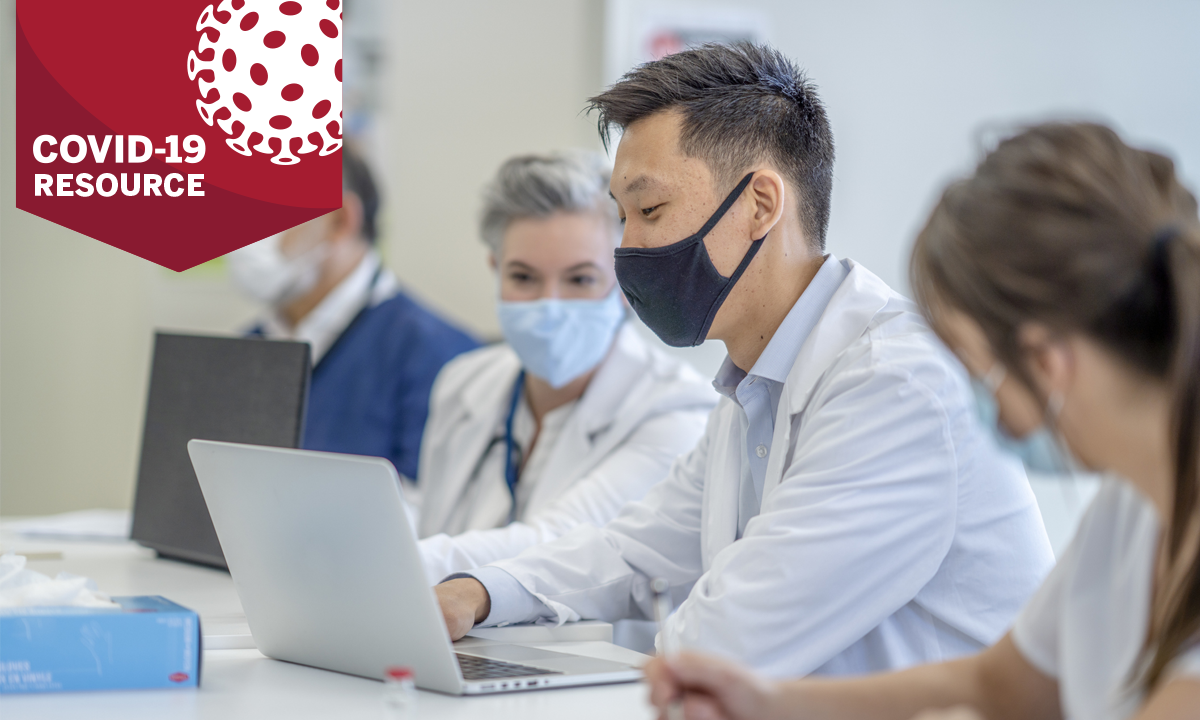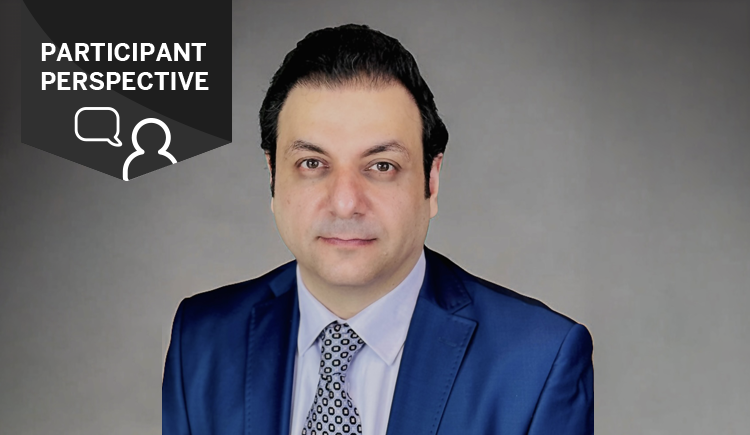
Information regarding COVID-19 has rapidly evolved. The content in this article provides a historical snapshot of events surrounding the date of posting.
For better and for worse, COVID-19 has radically impacted education. From swiftly adapting to remote and other asynchronous forms of learning and keeping students focused during a global crisis, educators have seen their field go through a fundamental shift. Nowhere is this more relevant than medical education, where students and trainees need to learn directly in the field. The experience of teaching medical professionals in a pandemic could potentially have long-lasting consequences on the future of health care throughout the world.
"I do think going forward, whether it's in medical schools, hospitals, or other institutions, virtual teaching is going to be much more frequent than we had ever anticipated before 2020," says Jeremy Richards, MD, assistant professor of medicine at Beth Israel Deaconess Medical Center and program director for the Harvard Medical School program, Training to Teach in Medicine.
Since the beginning of the COVID-19 pandemic, medical educators have blended the principles of classroom and remote teaching in ways that promote long-term, durable learning in students. Richards explains how the evolving field of adult learning theory, which he teaches to other medical educators at Harvard Medical School, can help improve medical education during this time and how educators can proceed with lessons learned from the pandemic.
How COVID-19 Impacted Medical Teaching
While not universally agreed that adult learning theory (andragogy) is different from child learning theory (pedagogy), an important component of adult learning theory is to focus on learners' unique needs and goals. Since many adults are highly motivated to complete continuing education, particularly if it is relevant to their work, they may increase their focus on content tailored to their self-perceived learning needs. Thus, educators aligning their teaching goals to students' learning goals ensures that "we meet our students where they are at," says Richards.
Adult students and trainees may also be multitasking with a job and personal responsibilities, so their working memory, the “space” in the brain to process new information, may be limited, and the phenomenon of “interference,” the concept of the brain being "too full" of information may be higher. This has been particularly true during the pandemic, given the impact of external psychological stressors on students’ ability to focus on learning. Educators often assumed that lectures and other unidirectional transferrals of information were effective ways to teach. However, this was proven false when in-person coursework was no longer feasible, and coursework became only one of the many issues on students' minds.
"Everyone learns in a more motivated fashion when they understand the need to know. During COVID-19 medical educators have needed to rethink how to connect with learners, given the online medium and the content. If we are discussing a curriculum that is not pertinent to the learners’ immediate reality, the connection is lost," says Richards.
Considering students' concerns about COVID-19, educators have diligently worked to engage students on non-related pandemic topics. When Harvard Medical School students learn about obstetrics or neurology, for example, educators need to connect concepts to the students’ circumstances where possible and establish the importance of identifying the bigger picture outside of the immediate context of the COVID-19 pandemic.
"Developing strategies to look beyond our immediate circumstances is another component of using the tenets of adult learning theory to connect with learners—here is what we're dealing with now, but we will get past this, and you'll need to learn how to use this content down the road," Richards explains.
Applying Adult Learning Theory in a Remote Setting
Previously in higher education, the perceived efficacy and convenience of in-person learning did not lead to a significant impetus to drive remote learning forward. Now, says Richards, his 2022 curricula will be partly virtual even if COVID-19 is no longer a threat to in-person learning. "Remote learning is effective, it's a way to flip the classroom, it's a way to interact with learners, and it's a way to optimize our time and their time," he says.
Applying adult learning theory to students' work outside of the classroom means focusing on digestibility, the student's “zone of proximal development” (the knowledge or set of skills that students or trainees can learn with an educators' help), and the adult learner's particular stressors. Leveraging adult learning theory in medical education allows for an evolving educational space where teachers can respect their students' capacity and level of learning while also working to fill in the blanks.
This can manifest as adding a level of low-stakes accountability to optimize engagement. For example, coupling a pre-recorded, 15-minute lecture with a short readiness assessment exercise can spur students to complete the video. Educators can see which students finished the work and where some learners might be having trouble understanding a particular concept. This helps the educator know where to spend more time during in-person or synchronous virtual sessions.
Active teaching that engages the learner has always been important, but intentionally and strategically using active teaching skills became critical during 2020 and 2021. The ways educators could interact with students had to change since classes were done virtually. Implementing active teaching in virtual spaces include using polls, breakout rooms, relevant “hands-on” activities, and intentional, timely breaks. Medical educators have needed to experiment with new ways to help their students understand and stay engaged.
Lessons Medical Educators Should Take Away from the Pandemic
Active teaching should become increasingly more important to medical educators in both online and in-person teaching sessions. As it can be more challenging to engage students who are not in the classroom, educators must adapt. Richards offers a few key ways, drawn from adult learning theory, to help educators evolve their methodology to achieve optimized learning outcomes:
- Augment interactivity for virtual teaching sessions using the available tools in platforms like Zoom.
- Engage on a deeper level with learners. Meet students at their level of knowledge, understanding, and experience. What is their “need to know?” What are their prior experiences? Is the coursework a match with their personal and proximal goals? Are they actively engaging with the material?
- Respect adult learners' autonomy. They are not simply passive audiences but should be active participants in the learning process. They may have manifold stressors and yet are also highly motivated to learn.
This time of upheaval will be a revelatory one for educators. Since rigorous research is still lacking on adult learning theory and its application in medical education, Richards hopes that his students and other educators can help contribute as we learn more about how to teach in a pandemic and beyond. "A robust evidence-based approach to education is going to be the future. We want our participants to be a part of that process," he says.
Written by Katherine J. Igoe


